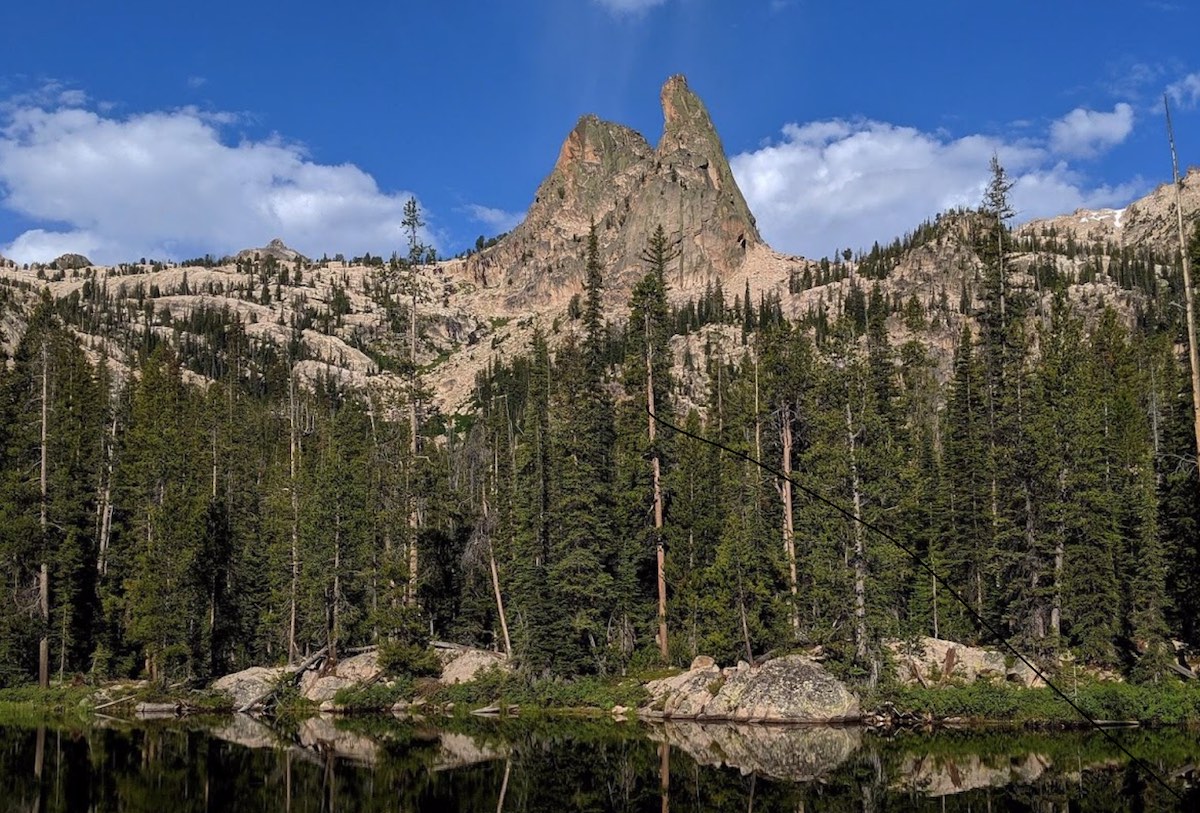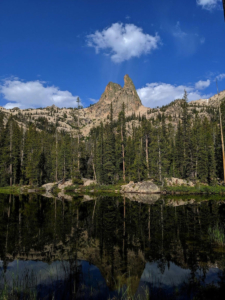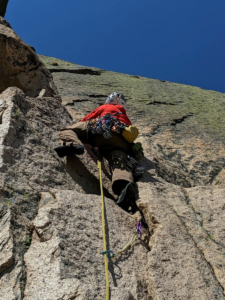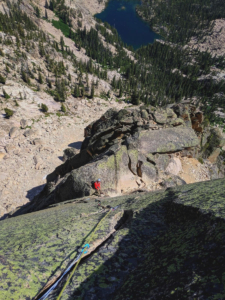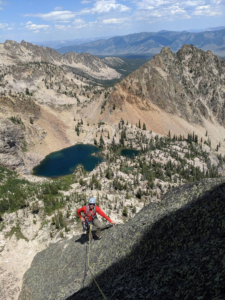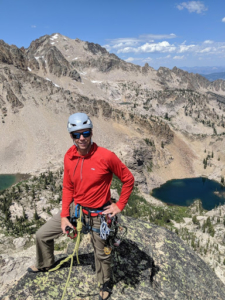Words and photos by guide JP Preuss
When you drive over Galena Pass and enter the Sawtooth Valley, it is hard to miss the uniquely shaped Finger of Fate as it juts out from the landscape. The shape of “the finger” formed from thousands of years of glacial erosion, leaving behind a beautiful pinnacle of Sawtooth granite! The climbing history of the Sawtooths is pretty secretive, but the Finger of Fate was first climbed in 1958 by Louis Stur and Jerry Fuller. Since then, many have adventured out there to test their skills on this iconic mountain. There are at least six routes found on the finger, ranging from 5.6-5.11. The most popular route is the Open Book (III 5.8), which is the obvious dihedral that is on the north face.
A couple of weeks ago I got a text from my friend Shawn, who is a part-time SMG guide and author of Geology Underfoot of Southern Idaho (shameless plug – go pick up a copy!). He was wondering if I was interested in going up the Finger of Fate. As I read it on my phone, my memory flashed back to struggling up the off-width cracks found in the first couple of pitches of the Open Book. It didn’t take long for me to quickly pull up my calendar and lock down a date. Ever since I last rapped off the summit block, I couldn’t wait to get back there and have a cleaner send.
Shawn and I separated our gear between the two of us, trying to make our packs as light as possible. The Hell Roaring trail is a mellow walk for the first 3 miles. Then, it ramps up in the last 2 miles with about 1700’ of “off-trail” hiking along beautiful kettle ponds filled with clear, turquoise water. Once we reached the base of the climb, we hung our packs on an old White Bark Pine and racked up. Shawn started off with the first pitch. WARNING BETA SPRAY DOWN: It consists of nice 5.7 finger to hand-sized cracks and finishes with about 15’ of insecure off-width crack (5.8) climbing. As you move through that section, there is a nice diagonal ledge on climber’s left where you can slowly walk your feet up. It provides easy stemming until, ultimately, you must fully commit to jamming your body into the crack until something holds!
I led the next pitch which begins with more off-width (5.8) for another 20’. This is where I struggled when I first climbed the route years ago, so I was waiting for the climb to get awkward and difficult. Luckily, that never happened, which means that my climbing must have improved from those early days of suffering through crack climbing. I first learned to climb in the Northeast on the wet metamorphic schist of Vermont, where there are fewer cracks and more face holds to crimp your way up. I felt great moving through the rest of the pitch, which turns into large blocks stacked on top of each other until I was just about to run out of rope. The third and fourth pitches (depending on how you define pitches) provide easy climbing through a cool tunnel and then spits you out onto 4th class terrain below the summit.
The last two pitches are just as good as the beginning of the climb. They yield perfect twin hand cracks with good jams or laybacks, depending on which style you prefer. Then, after a 25’ foot section of slab climbing, most continue to tunnel their way under the summit block and around the corner. This can be done with some creative gear placements to avoid your rope getting snagged and pulling you off the mountain. Lastly, is perhaps the most terrifying move of the whole climb. It is the infamous mantle onto the summit block with only an old pin to prevent you from swinging off into space. In fact, there is a lot of evidence of people rapping off before attempting this last move. After summiting, you’ll notice that the summit block is maybe 15’ wide and has a metal can bolted to the rock with a summit registry inside. Finally, after taking in the summit views, a few careful rappels will get you back down to the ground for the long descent out of the mystic world called the Sawtooths.
In my opinion, what makes the Open Book such a great climb is the wide spectrum of climbing styles it demands. It has it all… off-width cracks, stemming chimney moves, airy finger/fist cracks, mantles to make you thankful to be alive, run out slab, and belly crawling under a huge detached block. It definitely keeps a climber thinking and using their skills. I can appreciate this climb even more now after having struggled on it a few years back before my crack climbing skills were polished. Not only is this climb fun and dynamic for climbers, but it provides the breath-taking views and peaceful natural backdrop that the Sawtooths are known for.
